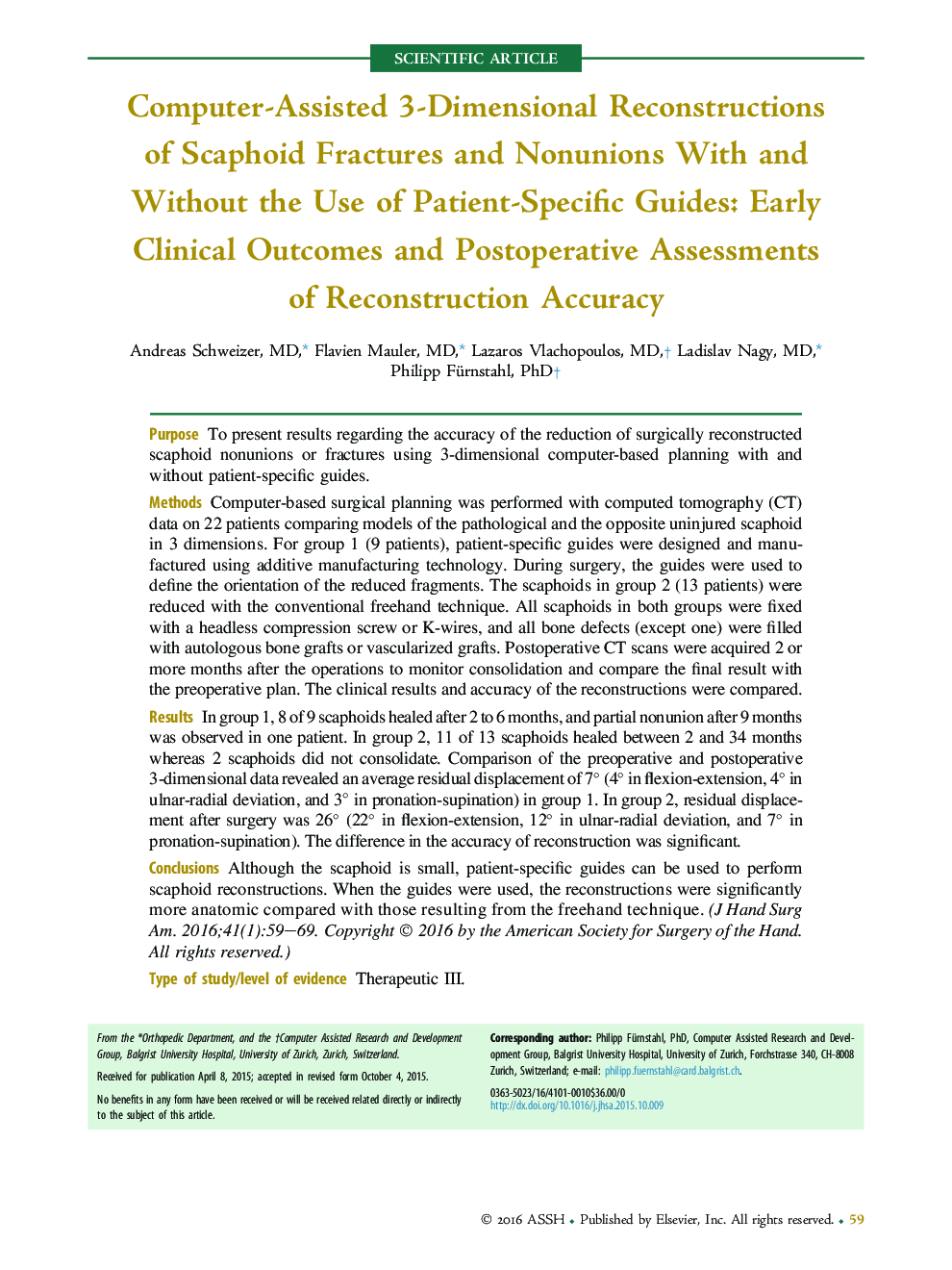| کد مقاله | کد نشریه | سال انتشار | مقاله انگلیسی | نسخه تمام متن |
|---|---|---|---|---|
| 4065970 | 1604348 | 2016 | 11 صفحه PDF | دانلود رایگان |

PurposeTo present results regarding the accuracy of the reduction of surgically reconstructed scaphoid nonunions or fractures using 3-dimensional computer-based planning with and without patient-specific guides.MethodsComputer-based surgical planning was performed with computed tomography (CT) data on 22 patients comparing models of the pathological and the opposite uninjured scaphoid in 3 dimensions. For group 1 (9 patients), patient-specific guides were designed and manufactured using additive manufacturing technology. During surgery, the guides were used to define the orientation of the reduced fragments. The scaphoids in group 2 (13 patients) were reduced with the conventional freehand technique. All scaphoids in both groups were fixed with a headless compression screw or K-wires, and all bone defects (except one) were filled with autologous bone grafts or vascularized grafts. Postoperative CT scans were acquired 2 or more months after the operations to monitor consolidation and compare the final result with the preoperative plan. The clinical results and accuracy of the reconstructions were compared.ResultsIn group 1, 8 of 9 scaphoids healed after 2 to 6 months, and partial nonunion after 9 months was observed in one patient. In group 2, 11 of 13 scaphoids healed between 2 and 34 months whereas 2 scaphoids did not consolidate. Comparison of the preoperative and postoperative 3-dimensional data revealed an average residual displacement of 7° (4° in flexion-extension, 4° in ulnar-radial deviation, and 3° in pronation-supination) in group 1. In group 2, residual displacement after surgery was 26° (22° in flexion-extension, 12° in ulnar-radial deviation, and 7° in pronation-supination). The difference in the accuracy of reconstruction was significant.ConclusionsAlthough the scaphoid is small, patient-specific guides can be used to perform scaphoid reconstructions. When the guides were used, the reconstructions were significantly more anatomic compared with those resulting from the freehand technique.Type of study/level of evidenceTherapeutic III.
Journal: The Journal of Hand Surgery - Volume 41, Issue 1, January 2016, Pages 59–69